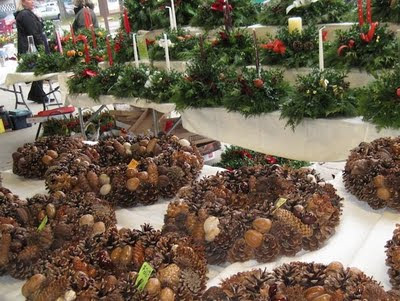 Saturday we decided to skip thanksgiving leftovers and go out to lunch at the Penn Avenue Fish Company. It's one of my favorite types of eating place: a fish market with dine-in tables, very informal, everything PERFECTLY fresh. Several of us had the special fish sandwiches -- mine was a thick piece of tuna with melted cheese on a crisp roll. Miriam and Alice had adult-sized portions of sushi. A couple of us had mussels too.
Saturday we decided to skip thanksgiving leftovers and go out to lunch at the Penn Avenue Fish Company. It's one of my favorite types of eating place: a fish market with dine-in tables, very informal, everything PERFECTLY fresh. Several of us had the special fish sandwiches -- mine was a thick piece of tuna with melted cheese on a crisp roll. Miriam and Alice had adult-sized portions of sushi. A couple of us had mussels too.
 After lunch we walked around this interesting food, sports memoribilia, and tourist shopping district of Pittsburgh. It's known as "the strip." In an all-chocolate shop, we found Madecasse chocolate bars (which had been found excellent in a NYT review a few months ago). Also a vast number of other specialty chocolate bars (prices from $4 to $24 for a 2 to 4 oz bar!), special hot-chocolate mix, imports of various chocolate favorites and off the wall stuff like chocolate bacon bars.
After lunch we walked around this interesting food, sports memoribilia, and tourist shopping district of Pittsburgh. It's known as "the strip." In an all-chocolate shop, we found Madecasse chocolate bars (which had been found excellent in a NYT review a few months ago). Also a vast number of other specialty chocolate bars (prices from $4 to $24 for a 2 to 4 oz bar!), special hot-chocolate mix, imports of various chocolate favorites and off the wall stuff like chocolate bacon bars.This wraps up my long Thanksgiving blog post activities. We came back yesterday. Luckily the predicted rain didn't start as early as expected, so it was nice driving. Now back to prep for the next month of holidays!















































